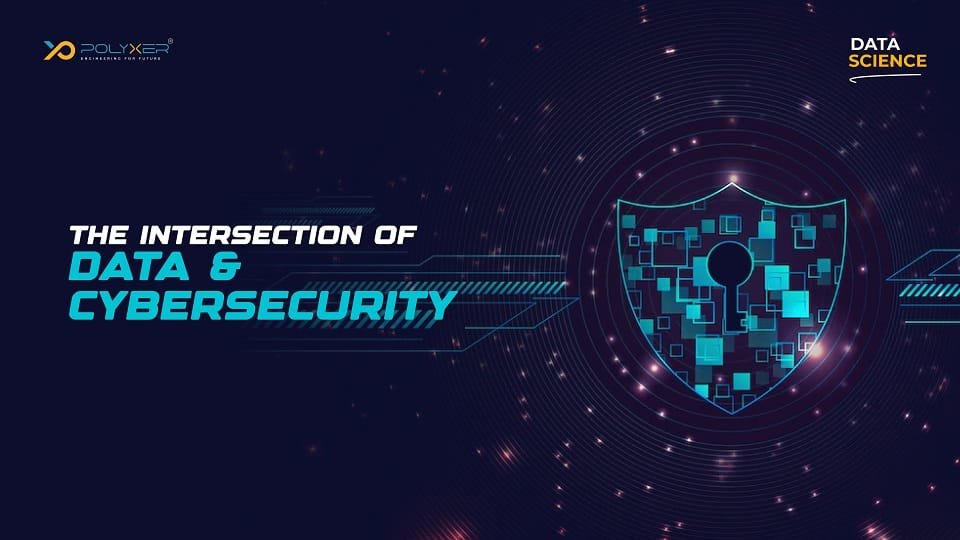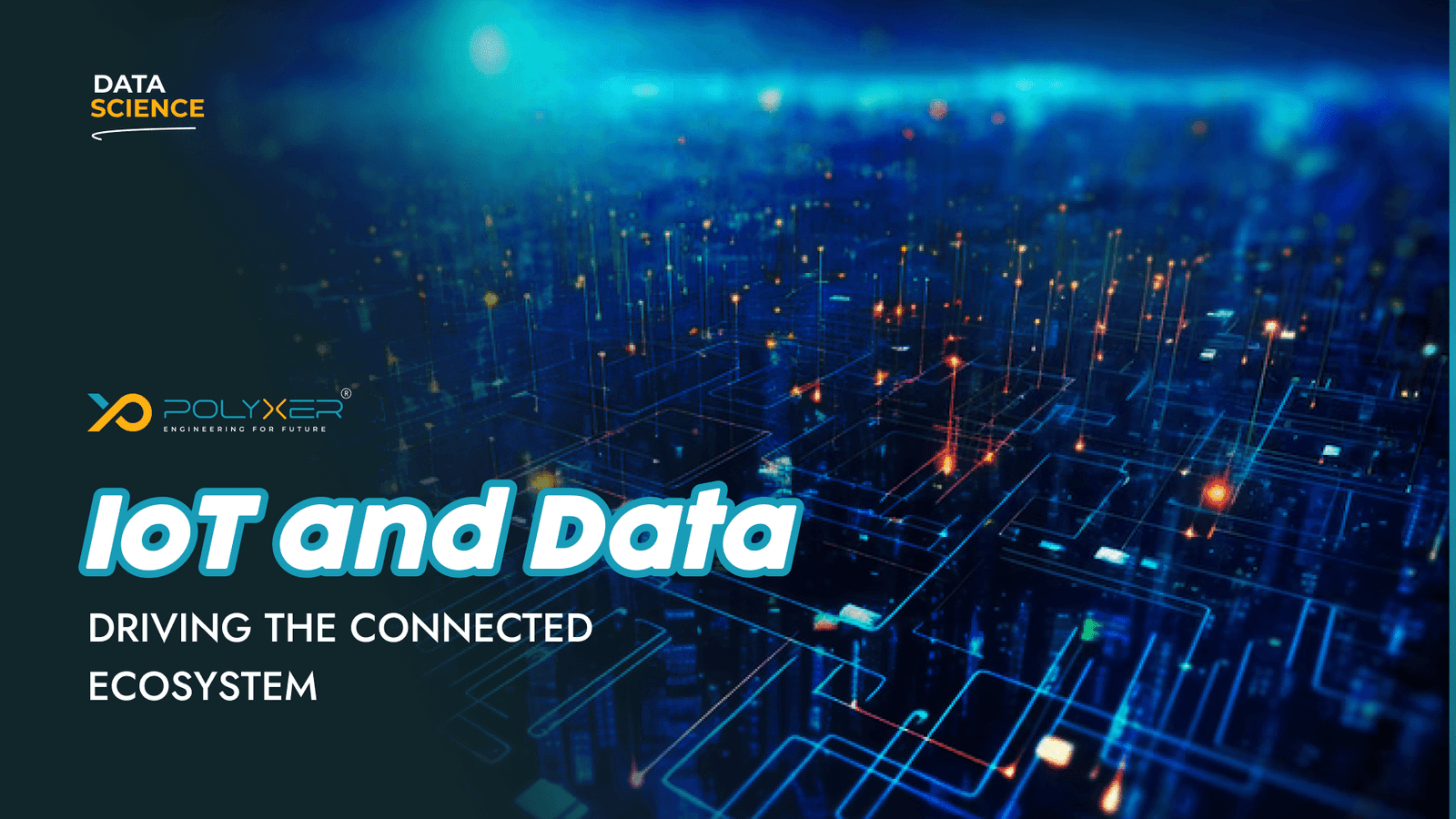
Cloud Development Services for 2025

Data in Education: Empowering the Next Generation
In our fast digital world, the intersection of data and cyber security is becoming a focal point for organizations in all areas. As data becomes ever more abundant, the need to protect that data from the growing array of cyber hazards has never been more important. The challenges stated by cyber attack have raised awareness about the importance of data security and management, forcing organizations to adopt strong cyber security measures.
With this newsletter, we will explore important relations between data and cyber security, draw attention to the best practices, and emerging hazards and strategies for organizations as they navigate this landscape.
The Growing Importance of Data
Data Explosion
Rapid digitization of services and operations means that organizations are generated and collected vast volumes of data. According to IDC, the global data sector is estimated to reach 175 zettabytes by 2025. This explosion of data spreads in various forms, including structured data in databases, and semi-corresponding data from sources such as social media, unstructured data such as emails and documents.
Types of Data at Risk
⦁ Personal Identifiable Information (PII): Names, addresses, social security numbers are the kind of data which is included in Personal Identifiable Information. PII is specifically sought by cyber-criminals to identify theft and fraud.
⦁ Trade Secrets and Intellectual Property: Ownership information of corporations, including patent and research data, can be equally attractive targets for competitors and hackers.
⦁ Health Information: Healthcare organizations maintain sensitive health records which are protected under rules like HIPAA. This type of data is valuable for cyber criminals interested in exploiting vulnerable population.
⦁ Operational Data: It includes internal communication, financial reports and strategic plans. Compromise with this data can cause significant operations disruption and financial losses.

Types of Data at Risk
The Rise of Cybersecurity Threats
Increasing Threat Landscape
The cyber security landscape has developed dramatically, in which cyber-attacks have become more sophisticated and frequent. According to Cyber Security and Infrastructure Security Agency (CISA), attacks on organizations have increased significantly, with ransomware, phishing and the most prominent risks with the dangers of internal threats.
Common Types of Cybersecurity Threats
⦁ Ransomware: This type of malware encrypts the data of an organization, which makes the data inaccessible until the ransom is paid. The ransomware attacks increased during the Covid-19 epidemic, which affects organizations worldwide.
⦁ Phishing: Phishing attacks involve cheating individuals in disclosure of sensitive information by explaining individuals as reliable institutions in emails or messages. With an increase in remote work, phishing attempts have become more sophisticated and prevalent.
⦁ Insider Threats: These threats arise from individuals within the organization, such as employees or contractors. Whether intentionally or unknowingly, internal threats may result in important data violations and compromised systems as a result of threats.
⦁ Distributed Denial-of-Service (DDoS): DDoS attacks, which overwhelms the network or service of the target to render it unavailable. These attacks can disrupt operation and damage the reputation of an organization.

Common Types of Cybersecurity Threats
The Interplay Between Data and Cybersecurity
The Importance of Data Protection
Protection of data is an important component of any comprehensive cyber space strategy. Organizations should take active measures to protect their data against unauthorized access, violations and losses.
Data Classification and Sensitivity
Organizations should apply a data classification plan to classify data based on sensitivity. This classification indicates data handling, storage and access control policies. Understanding which data is most important, organizations can effectively prioritize safety efforts.
The Role of Encryption
Encryption serves as an important protection for sensitive data, ensuring that even if the data is intercepted or accessed without the authority, it remains unable without proper decryption keys. Organizations should apply encryption protocol:
⦁ Data at Rest: Encrypting data stored on server, database and backup equipment prevents unauthorized access to sensitive information.
⦁ Data in Transit: Implementing encryption protocols for data sent on network safety measures against interception and evolution during communication.
Access Control Measures
It is necessary to implement strict access control measures in the protection of data from unauthorized access. Organizations should adopt the "least privilege" approach, providing only the necessary access to employees to perform their tasks.
⦁ Role-Based Access Control (RBAC): Access rights are assigned based on job roles, ensuring that employees only have access to relevant data and systems for their specific functions.
⦁ Multi-Factor Authentication (MFA): MFA adds an additional layer of protection from the need of users to provide several forms of verification to users before accessing sensitive systems or data.
Data Loss Prevention (DLP)
DLP solution monitors and controls the movement of sensitive data within and out of the organization. Applying DLP policies helps prevent data leaks or unauthorized sharing, while ensuring compliance with data security rules.
Regulatory Landscape and Compliance
Importance of Compliance
Data Protection Regulations - such as General Data Protection Regulation (GDPR), Health Insurance Portability and Accountability Act (HIPAA), and California Consumer Privacy Act (CCPA) - Guidelines for management and security of personal data. Staying in line with these rules reduces the risks of legal punishment and reputed damage.
Best Practices for Compliance
⦁ Regular Audits and Assessments: Conducting regular audits helps organizations to identify compliance intervals and ensure compliance of data safety policies.
⦁ Data Inventory: Maintaining a comprehensive list of data and its classification has enabled organizations to understand what data they have, how it is used, and where it is stored.
⦁ Privacy Policies: Clearly defined privacy policies inform customers about data collection, handling and usage practices. Transparency creates confidence and strengthens strong customer relationships.

Best Practices for Compliance
Case Studies in Data and Cybersecurity
Case Study 1: Target Corporation
Background:
In 2013, the Target Corporation experienced one of the most important data violations in retail history, with personal information of about 40 million credit and debit card accounts and email addresses of additional 70 million customers. This incident underlined the importance of data security and cyber security in managing sensitive information.
Incident Overview
⦁ Attack Vector: The breached happened during the shopping season of holiday, and the attackers had access to the target network through a third-party vendor, a heating and credentials compromised with a cooling company, with a system of targets for maintenance purposes.
⦁ Data Compromised: The attackers installed malware on the target's point-of-sale (POS) terminals, which was real-time capturing customer credit and debit card data while purchasing customers.
Response and Remediation
⦁ Immediate Actions: After the attack, the target took several instantaneous actions, including a cyber security firm to check the breech, remove malware and increase the network safety protocol.
⦁ Customer Protection Measures: Target offered one year of free credit monitoring and identity protection services to the affected customers to reduce the impact of violation.
⦁ Review of Vendor Access: The incident allows the target to re-assure their relationships with sellers and tighten the security protocol for the third-party access to their network.
Outcomes
⦁ Reputation Damage and Financial Impact: Data violation resulted in significant prestigious damage to the target, as well as the estimated cost exceeding $ 200 million, including legal fees, settlement costs, and increase in cyber security measures.
⦁ Strengthened Security Posture: As a result of the event, the target implemented comprehensive safety enrichment, including advanced monitoring system, better danger detection ability and data protection and strong training programs for employees on cyber safety principles.
Lessons Learned
⦁ Third-Party Risk Management: Organizations must carefully evaluate and monitor the safety practices of third-party vendors to reduce the risks associated with external access to sensitive data.
⦁ Proactive Cybersecurity Measures: Regular safety assessment, employee training, and a strong event response plan are essential components of an effective cyber safety strategy to protect sensitive data.
Case Study 2: Equifax
Background:
In 2017, Equifax, one of the largest credit reporting agencies in the United States, faced a large -scale data violation, which highlighted more than 147 million customers' personal information, including social security numbers, driver's license number and credit card information. The incident highlighted weaknesses in data management and cyber security practices within large organizations.
Incident Overview
⦁ Attack Vector: Breach was attributed to failure to patch a known vulnerability in the Apache Stright Web app framework. The attackers exploited this vulnerability to achieve access to the system of Equifax.
⦁ Data Compromised: Sensitive customer data, including social security numbers, date of birth, address and some cases, credits information, was compromised.
Response and Remediation
⦁ Public Disclosure: Equifax publicly revealed violations in September 2017, admitting that the attack took place months ago.
⦁ Efforts to Assist Affected Consumers: The company offered many resources, which includes recognized credit monitoring services and identity theft for those affected by breach.
⦁ Cybersecurity Upgrades: After the incident, Equifax made comprehensive therapeutic efforts including wide safety protocols, reviewing its data protection practices, and investing in cyber security technology to prevent future violations.
Outcomes
⦁ Financial Consequences: Equifax faced adequate costs due to breach, including legal settlements, regulatory fines and increased expenses for improving cyber security. The overall financial impact was estimated to exceed $ 1.4 billion.
⦁ Damage to Reputation: This phenomenon severely damaged customer trust, causing long-term consequences for the prestige and professional operation of Equifax.
Lessons Learned
⦁ Importance of Patching Vulnerabilities: Organizations must prioritize updates and patch the weaknesses known to protect systems against potential exploitation.
⦁ Comprehensive Incident Response Plans: Developing a strong event response plan is important to address data violations efficiently and reduce damage when events occur.
Conclusion
Target corporation and Equifax case studies underline the important intersection between data and cyber security. Both organizations suffered significant data violations, resulting in customer information, financial loss and iconic damage. The lessons learned from these events highlight the importance of active cyber security measures, effective risk management about third-party vendors and continuous inspection in maintaining data security.
As organizations navigate the complexities of the data landscape, integrating strong cyber security practices will be necessary in protecting sensitive information and building confidence with customers. By leveraging insight by these case studies, organizations can develop more flexible security strategies that prepare them to face the dangers developed in today's digital world.
Future Trends in Data and Cybersecurity
1. The Role of Artificial Intelligence and Machine Learning
AI and machine learning cyber security scenario are changing. These technologies enable organizations to identify and reduce dangers by analyzing large amounts of data, detecting discrepancies and responding to events in real time. Major applications include:
⦁ Threat Detection: The AI-driven security system analyzes the pattern of behavior so that they can identify and flag the potential threats before they become physical.
⦁ Automated Incident Response: Machine Learning algorithm may automate reactions to the threats, reactions may reduce time and minimize the effects of cyber-attacks.
2. Zero Trust Security Model
The Zero Trust model operates on the principle that no user or device should be relied on by default without caring for their location within or out of the network. As organizations adopt this model, they apply stringent certification protocols, access controls and continuous monitoring.
3. Increased Focus on Privacy Protection
With increasing emphasis on data privacy, organizations will prefer privacy protection strategies. This includes data handling processes involving confidentiality by design principles, ensuring compliance with rules and providing control of users to their data.
4. Continued Growth of Cloud Security Solutions
As organizations migrate rapidly in cloud-based environment, cloud security solutions will continue to develop. The provider will offer enhanced equipment and technologies designed to protect the data stored in the cloud, ensuring compliance with the rules of the industry.
5. Cyber Insurance Adoption
As cyber risk increases, organizations will recognize the importance of cyber insurance as a risk management strategy. Cyber insurance policies can help reduce financial losses as a result of data violations, cyber attacks and other incidents.

Future Trends in Data and Cybersecurity
Wrapping Up
As the digital landscape is developing, the intersection of data and cyber security is important for organizations interested in a rapidly connected world. The protection of data is not just a regulatory requirement; it is necessary to maintain customer confidence and organizational integrity.
By implementing strong cyber safety measures, organizations can protect their data from emerging hazards, while leveraging data providing insight. As we move forward in a scenario with rapid technological progress and growing cyber threats, the synergy between data and cyber security will play an important role in shaping the future of trading operations.
Organizations that prefer data security and invest in innovative cyber security strategies will be better deployed to navigate further challenges, unlocking new opportunities while protecting their most valuable assets i.e., Data.
This article is also here.






